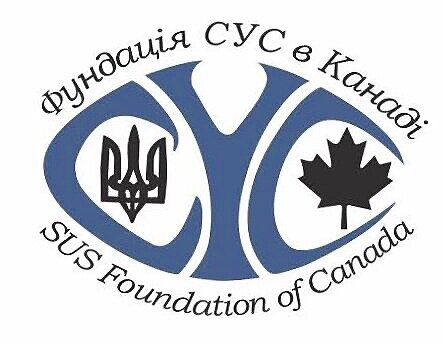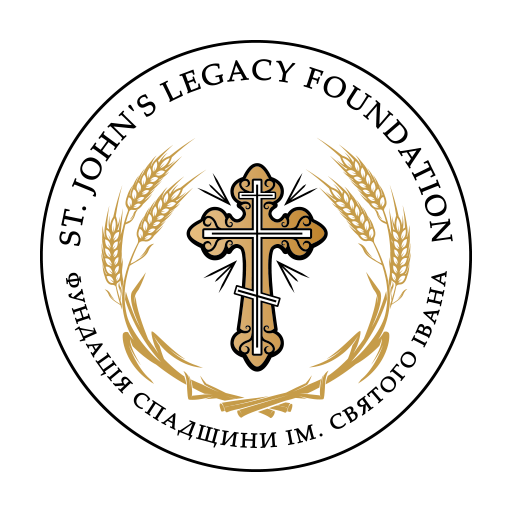The origins of St. Demetrius church can be traced back to the first years of the twentieth century, or shortly after the arrival of the pioneering Ukrainian homesteaders in the Star-Skaro area. A school established north of Bruderheim in 1906 subsequently gave the district its name. Jaroslaw was chosen in honour of the town near the modern-day city of Przemysl, Poland, the original home of many of the early Ukrainian emigrants to the Beaver Creek area. Shortly after these hardy farmers had settled on their land, they quickly turned to the task of establishing a place of worship.
Work on a modest log church capped by a small dome began in 1902. When the sanctuary was completed some two years later it was registered (on a Certificate of Title obtained 1 December 1904) under the name "Congregation of the Greek Catholic Church at Beaverlake in the District of Alberta, in the North-West Territories of Canada." The community was initially served by Ukrainian Catholic priests of the Basilian Order from Mundare, since its founding members came from the traditionally Greek Catholic part of eastern Galicia, then under Austro-Hungarian rule. In the meantime, the congregation adopted Saint Demetrius the Martyr as the patron and protector of their church, legally changing the name on the Certificate of Title on 29 July 1908.
The first decades of Ukrainian settlement in Canada were not only characterized by physical hardship, but wrought by religious controversy and strife. Catholic, Orthodox and Protestant missionaries vigorously competed for the religious allegiance of the newcomers. These inter-denominational rivalries were further aggravated by political issues affecting the immigrant community. One source of growing friction was the rapid development of Ukrainian national awareness shortly before and during the Great War. The often-bitter disputes had a divisive impact on many Ukrainian settlements across Canada, including the sprawling Beaver Creek colony northeast of Edmonton.
Because of these tensions, members of the St. Demetrius congregation increasingly came into conflict with their more conservative clergy. A major source of antagonism was that Catholic priests at the time tended to be hostile to the pro-Ukrainian movement in Canada. They continued to use the archaic Church Slavonic in celebrating Mass, instead of the modern vernacular. The surge of Ukrainian national feeling brought on by the establishment of a short-lived independent government in revolutionary-era Ukraine, coupled with the founding of the patriotically oriented Ukrainian Greek Orthodox Church of Canada in 1918, had the effect of heightening the political and religious differences among pioneer immigrants.
In Jaroslaw the rifts steadily became wider, and after 1923 the Basilan fathers stopped coming to the community from Mundare. Two years later, Rev. D. Seneta was invited to celebrate the patron feast day liturgy at St. Demetrius church, marking the first time that the Ukrainian language was used in the sanctuary. That same year, on 11 October, Archbishop Ioan Theodorovich visited nearby Bruderheim, undoubtedly contributing to the groundswell of local support for the Ukrainian Orthodox Church that was then percolating through rural communities across the prairies. A founding bishop of the Autocephalous Orthodox Church in Ukraine, Theodorovich was a stirring speaker and a physical embodiment of the rebirth of national Orthodox traditions in the homeland.
It appears that for several years tensions ran high at the Jaroslaw church as parishioners debated the question of affiliation. The majority of church members wanted to join the recently-established Ukrainian Greek Orthodox formation, while a small number wished to remain within the Catholic fold. An arrangement was therefore made to buy out the minority faction so that they could build their own place of worship, or use the money as they saw fit. The negotiations led to the signing of a formal memorandum of agreement between the two parties on 16 March 1928. The six Catholic loyalists were granted $400 for their share in the original construction and maintenance of St. Demetrius Church. At the same time, ownership of a strip of land on the north side of the church property (commonly known as the "old graveyard") was to be given to the Catholic parishioners, who had to quit the congregation and surrender all claims on the church. While the graveyard strip was legally transferred on 20 March 1928, clear title for the church itself was awarded to the Orthodox adherents on 11 March the following year.
As a result of this division of assets, the cemetery continued to be used by both denominations, reflecting the relatively civilized way that an undoubtedly painful conflict was resolved. The fact that St. Demetrius church was never destroyed by a mysterious fire in the wake of this parting of ways – as often happened in similar disputes – is a testament to the wisdom and tolerance shown by both sides. Eventually, the Catholic inhabitants of the Jaroslaw district erected the Holy Spirit Catholic Church on the opposite side of Highway 38, just east of St. Demetrius Ukrainian Orthodox Church.
By the end of the Depression, it was felt that the original sanctuary was old and needed to be replaced. Thus, between 1939-1940 a new Saint Demetrius church was built under the direction and according to the plan of carpenter and executive member George Doskoch. He saved money and symbolically preserved the work of the pioneers by utilizing some of the timber salvaged from the first building. Other logs were donated by Wasyl Rutar, and sawn into lumber by Mike Serink, who along with Anton Tancowny, Hrynko Kochan, George Lewak, Paul Holowach, [Andrei] Nepiuk and [George] Onushko, assisted in the construction. Seventeen-year-old Russ Pysmeny acted as the "gopher" for the all-volunteer work crew. The resulting cruciform structure was crowned by a large dome, and had a storm porch attached to the apse. Although built over the original foundation, for some reason the layout got turned around so that the congregation faced west instead of east, as is customary in the Eastern Church. Be that as it may, the completed St. Demetrius Church was formally consecrated by Archbishop Ioan Theodorovich during a visitation in the summer of 1940. At the time, the congregation lacked regular pastoral care, its needs being tended by priests based in Edmonton and Vegreville.
In 1943 a total of seven Divine Liturgies were celebrated at St. Demetrius, the same number of services that were held in 1947, when the congregation reported having eleven members. The membership shrank to eight by 1951, when eight services took place, these figures only fluctuating slightly over the course of the decade. In 1953, it was suggested in a letter to the Consistory that one priest be designated to serve both St. Demetrius and nearby St. John's church in Peno – which received pastoral care from Vegreville and Willingdon respectively – so as to bolster the Ukrainian Orthodox presence in a region long dominated by Ukrainian Catholic and Russo-Orthodox adherents. With its slowly dwindling membership base, due to deaths and the migration of people from the countryside, the St. Demetrius congregation obviously felt somewhat pressured as to its viability and continued vitality. Nevertheless, in 1959 the congregation installed an iconostasis in the church that it had commissioned from the Edmonton artist, Wadym Dobrolige (1913-73), a major project costing $1200 which was realized through the commitment of the nine families then active at St. Demetrius.
The situation of the congregation remained relatively unchanged over the course of the next two decades. In 1983, at the request of parishioners, responsibility for St. Demetrius was transferred to Radway district on the other side of the North Saskatchewan River. Three years later, St. Demetrius became an officially constituted member of the Ukrainian Orthodox Church of Canada, having never previously fulfilled the procedural requirements called for in accepting the statues of the church.

Play Memory Eternal Chant
Visit this Cemetery
GPS Co-ordinates: 53.889251, -112.901779
Affiliation: Ukrainian Orthodox Church of Canada



 Financial support generously provided by:
Financial support generously provided by: 